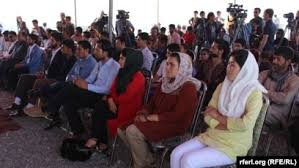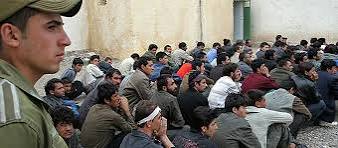What major problems do young people in Afghanistan face? What is the solution to these problems?

Major problems of youth in Afghanistan
-
Unemployment and poverty:
- The lack of job and economic opportunities has increased unemployment among young people.
- Many young people are unable to meet their basic needs due to poverty.
-
Insecurity and violence:
- The youth are directly affected by war and insecurity.
- Violence related to militia groups and local conflicts threaten their lives.
-
Limited access to education:
- Many young people cannot achieve higher education due to insecurity, poverty, and lack of educational infrastructure.
- Inefficient educational system and its mismatch with the needs of the labor market.
-
Psychological and social problems:
- Unfortunate experiences of war and insecurity have caused an increase in psychological problems such as depression and anxiety among young people.
- Lack of counseling services and psychosocial support.
-
emigration and brain drain:
- Due to the lack of suitable job and educational opportunities, many young people migrate to other countries.
- This issue causes the loss of skilled and educated labor force in the country.
-
Gender discrimination:
- Young women face more restrictions in accessing education, employment and social participation.
- Cultural traditions and beliefs prevent women from progressing.
-
addiction:
- Increase in drug use among young people due to desperation, unemployment and poverty.

- Increase in drug use among young people due to desperation, unemployment and poverty.
Proposed solutions for youth problems in Afghanistan
-
Creating job opportunities:
- Investing in different economic sectors to create new jobs.
- Developing small and medium businesses and supporting young entrepreneurs.
-
Improving the security situation:
- Trying to reduce violence and conflicts through peace negotiations and international support.
- Strengthening security forces and creating safe areas for young people to live and work.
-
Development of the educational system:
- Improving the quality of education and adapting it to the needs of the labor market.
- Increasing access to technical and professional training.
-
Psychological and social supports:
- Providing counseling services and psychological support to young people to deal with psychological problems.
- Creating educational and awareness programs in the field of mental health.
-
Decreasing immigration and brain drain:
- Creating suitable conditions for living and working inside the country.
- Providing financial support and educational opportunities to educated youth.
-
Fight against gender discrimination:
- Promoting gender equality and supporting women’s rights.
- Creating educational and awareness programs in the field of women’s rights and gender equality.
-
prevention and treatment of addiction:
- Creating addiction prevention programs and providing treatment services to addicts.
- Increasing public awareness about the dangers of drug use and ways to prevent it.
-
Infrastructure Development:
- Investing in educational, health and service infrastructures.
- Creating recreational and cultural facilities for young people.
